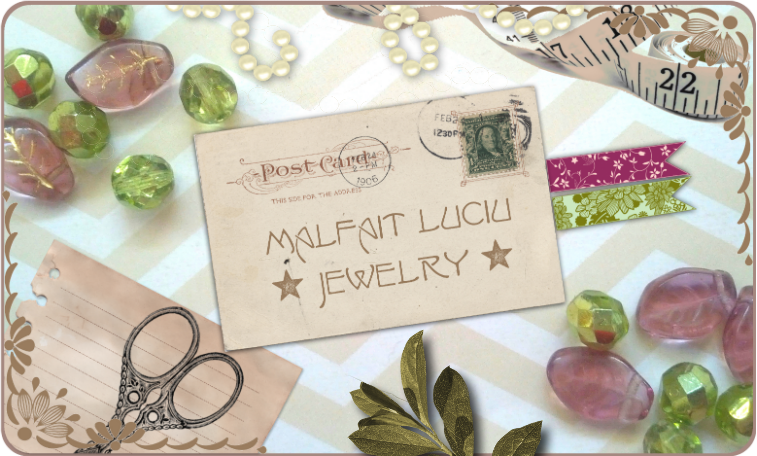Lately I've been playing with various techniques of applying patinas to copper. I'm having a blast playing with heat patinas and borax patinas, but I get the most satisfaction from ammonia and salt patinas.
I thought it might be fun to do a little tutorial on the way I apply patina to my pieces. I'll focus on ammonia and salt patinas for now. They are deceptively easy to achieve! Let me walk you through my process :)
Materials:
- The copper piece you want to patina
- A plastic container, for example one of those disposable food storage containers. It must have a lid! I use a large one but a smaller one would work just fine; but it must be a container you're willing to sacrifice and never use to store food in again
- Ammonia - all I could find at the store was the lemon scented kind but it works just as well as plain old ammonia
- Table salt
- Wire - I use 20 gauge base metal wire
- Something pointy and metal that can be heated - I use an old needle file
- A small cheap paint brush
The first step is to create your fume container out of your food storage container. Use your pointy tool/needle file, and hold the tip over a flame to make it hot. Then use it to melt a hole in the side of your container. Melt two more holes beside the first one and try to make them even. Repeat this on the other side of the container, making sure it's directly across from your first set of holes and also at the same height as the first holes.
Now, take a few lengths of wire and feed them through the holes, one side to the other. Bend down the excess wire so it doesn't slide right back out. Repeat for the other two pairs of holes. In my container below, you can see the three wires spanning the width of my container.
At this point, pour in a little ammonia. You don't need a lot! I have maybe a centimeter of ammonia in my container. It's the ammonia fumes that interact with the salt and produce the patina, not the liquid itself, so you don't need a lot.
CAUTION
Ammonia fumes are very, very strong and are not something you want to be inhaling. It can also hurt your eyes, so please work in a very well ventilated place with safety goggles!
Next, take your copper piece and paintbrush and brush it with some of the ammonia, then set it on top of the wires in your fume container so it's suspended above the ammonia.
Next, while the piece is still wet, sprinkle a VERY generous amount of table salt onto your piece.
Now comes the waiting. Put the lid on your fume container and carefully move it to a place where it will not be disturbed.
You'll notice after a little while, the salt has turned blue! It's an encouraging sign, but don't get too excited - at this point the blue is only on the salt, not the copper piece beneath.
After leaving the whole assembly alone for awhile, the patina on the copper will slowly build. This takes time; I usually leave my items in the fume container for three days, although you can go longer if you like.
Once the three days are up, it's time to remove your piece. Rinse off the salt crust with a little water, and take a look at your gorgeous patina!
At this point I use a couple coats of ProtectaClear to protect and preserve the patina. Now you're ready to use your patina pieces in whatever jewelry project you have in mind :) Here's another example of this method:
I hope this little mini tutorial is useful! Next I think I'd like to document the process of adding a borax patina to your copper pieces, as I've done here with these earrings:
It's a great method that gives a lovely mottled red color to your copper, and an added bonus is there's no waiting for days for it to develop, it shows up right away! :)
For now, I'll leave you with my sweet boy Neo, keeping me company in my studio (my cats are so spoiled, they get their own little pillow to sit on on my work table! But mainly I put it there because otherwise they like to hop up and lay right down on the table on top of all my work! haha)
Til Next Time!










Thanks for the neat instructions!
ReplyDeleteThank you for sharing your knowledge. Love your kitty!
ReplyDeleteHi there - a question about you using ProtectaClear - do you use Natural or Satin, and do you simply brush a little on or sponge it? Do you have any issues with it brushing off the patina? thanks for the nice post!
ReplyDelete